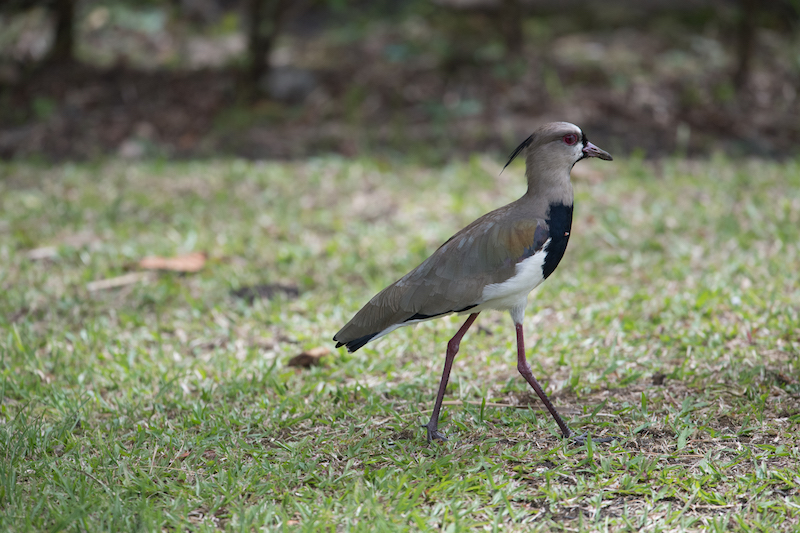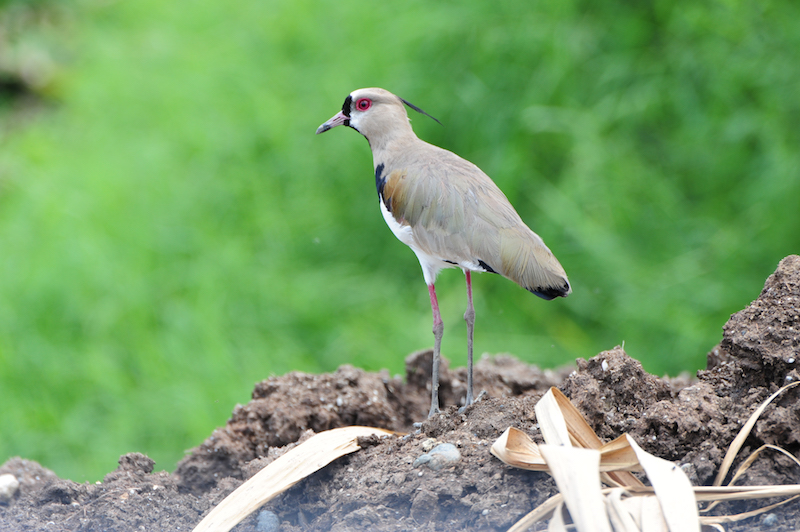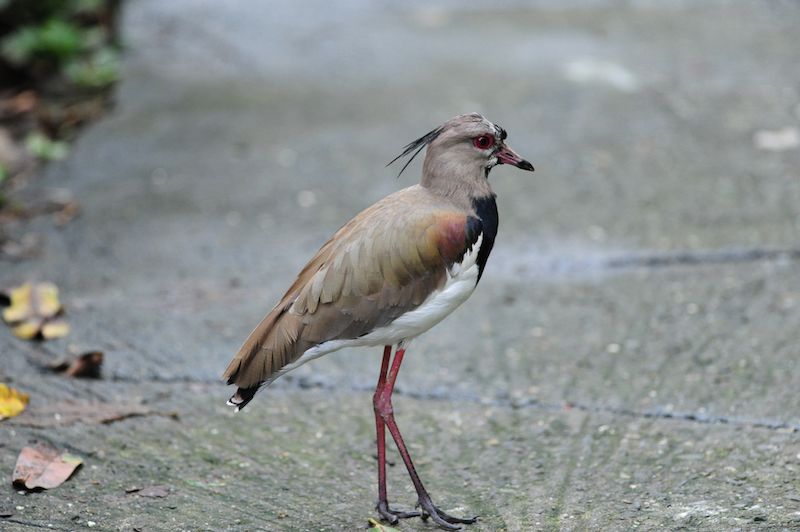
Southern lapwing
Pellar
Vanellus chilensis
The Southern lapwing has a size from 32 to 38 cm (13-15 in) and a weight that ranges from 250 to 425 g. They are found in all the country except the Amazon region. The lapwing generally inhabits in seasonally-flooded tropical grasslands lower than 3,200 m (10,500 ft). The upperparts are brownish with a bronze color on the shoulders. Its head has a black face and a long and acute crest. A white border separates the black forehead and throat patch that extend to the black breast. Eye ring is white with red iris. Legs are red. The rump is white and the tail black. The lapwing has a pink bill with a black end. its underparts are white. It possesses a red bony extension under the wings similar to spurs that are used to fight predators and other birds. It feeds on insects and invertebrates that finds in the soil. This bird breeds on grassland and often in cultivated areas and it has an aerobatic flapping display flight. The clutch consists of 2 to 3 brown eggs with black dots. The nest is guarded by several males that turn very aggressive when the nest is disturbed by intruders. They threat by flying low and emit a repetitive, strident sound similar to the harsh an loud call they produce when they go to sleep.
El pellar mide entre 32 a 38 cm y de un peso de 250 a 425 g. Habita en todo el país a alturas debajo de los 3200 m de altura. No se encuentra en la región amazónica. Presenta una cresta o copete occipital larga y aguda de color negro. Su espalda es gris pardusco, con hombros de tono verde-café. Su vientre y rabadilla son de color blanco. Su frente, gula y pecho son negras. Su pico es rosado con punta negra. Iris y patas rojas. Bajo sus alas exhibe unas prolongaciones óseas o espolones que utiliza para defenderse del ataque de otras aves. Al volar muestra debajo de sus alas negras un parche blanco en las cobertoras. No hay dimorfismo sexual. Se las observan en parejas o en pequeños grupos. Habitan en praderas húmedas y lugares de vegetación baja, pastizales y jardines al lado de lagos. Se alimenta de larvas, lombrices, e invertebrados que encuentra en el suelo. Su nido lo hace en el suelo y pone de 2 a 3 huevos color castaño oliva con puntos negros. El período de incubación es de 25 a 27 días. Su nido es defendido por varios machos muy agresivos cuando alguien se acerca al nido. Cuando esto sucede emiten un grito estridente, fuerte y repetido similar al que producen cuando regresan a dormir.

LAM_7431

LAM_7434

LAM_8499LAM_7583

LM1_3283

LM1_4847P

LM1_4848
